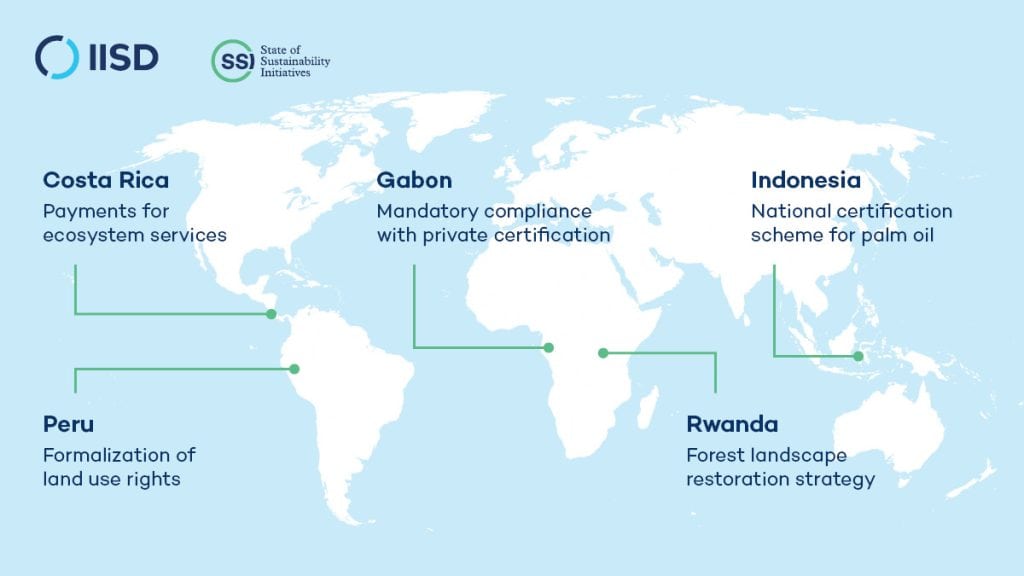Measures to Enhance Forest Conservation and Reduce Deforestation: Viewpoints and lessons from producing countries
Author:
Forests sustain and protect us in a myriad of ways. They absorb carbon dioxide and provide us with oxygen, they harbour more than three quarters of terrestrial biodiversity, and they support the livelihoods of millions of people worldwide.
But the world has lost 420 million hectares of forest since 1990. That’s an area bigger than India. Given looming environmental crises—including climate change and biodiversity loss—the need to protect these vital ecosystems has gained significant prominence in political agendas.
This report outlines and compares various policy measures that Costa Rica, Gabon, Indonesia, Peru, and Rwanda have put in place to address deforestation and explores the role of voluntary sustainability standards (VSSs) in complementing them.

The report provides a detailed analysis of the successes and challenges each country has encountered in their attempts to reduce deforestation and improve forest conservation. From these experiences, it distils seven common findings to help guide governments in the Global South seeking to embark on similar journeys.
In summary, governments tend to have more success at preserving and restoring forests if they
- use a combination of measures tailored to the local context
- target areas that are at high risk of deforestation
- recognize the true economic and environmental value of forests
- provide support to enable producers and forestry operators to comply with the measures
- engage with multiple actors and mobilize funds from both the public and private sector
- leverage VSSs to complement and support policy measures
- use both physical and digital monitoring to measure results and flag issues early

